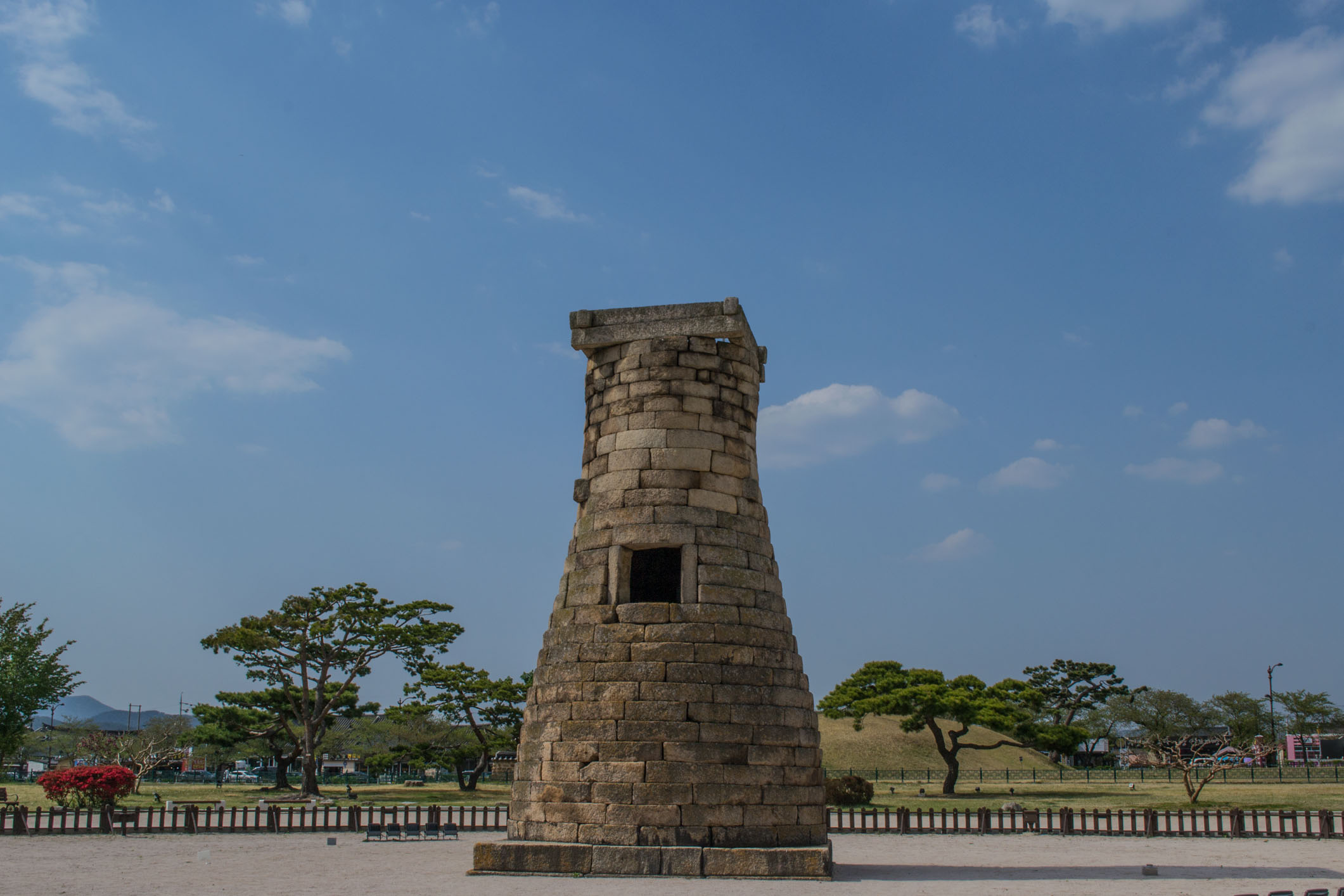The title of this blog post says it all! Gyeongju was my favorite place to visit in South Korea. Gyeongju is a historic city located in southeast South Korea, at about a hundred kilometers from Busan. What I really liked about Gyeongju is its calming and relaxing atmosphere. It seems like time goes by really slowly in this city and this gives it a very different vibe from Korea’s other big cities.
There are also many interesting places to visit in Gyeongju. It was the capital of the Kingdom of Silla that dominated the entire Korean peninsula for a millennium, and you can find traces of this glorious past everywhere in Gyeongju.
Let’s find out more about Gyeongju after the following tips on how to get there and where to stay.
How To Get To Gyeongju
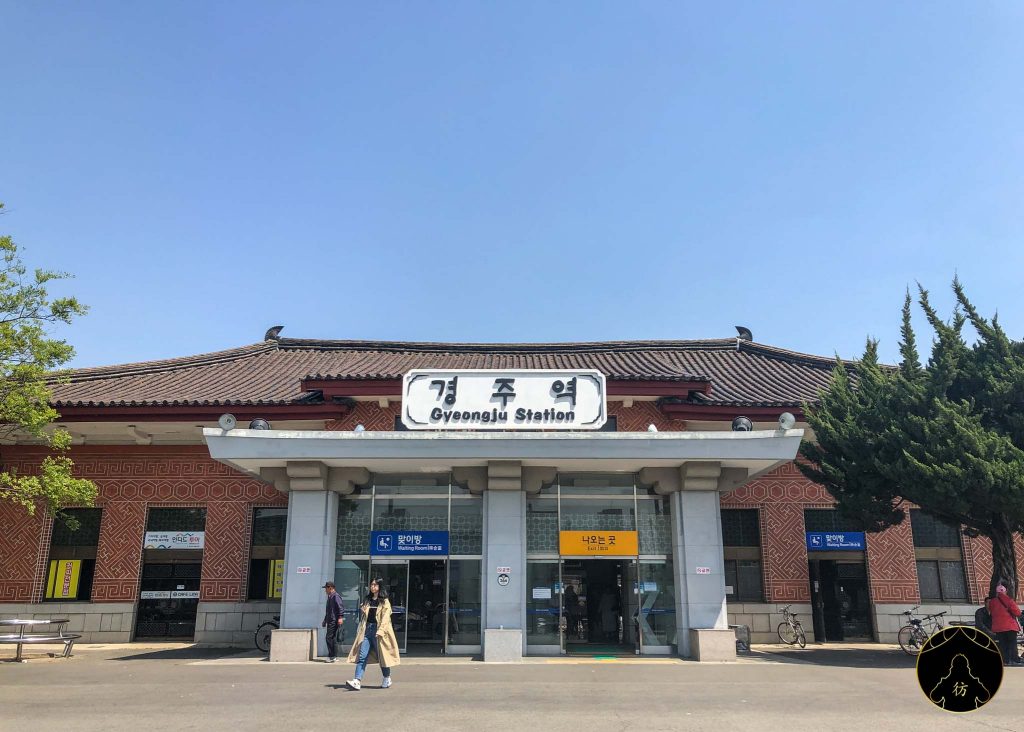
If you’re going to Gyeongju from Busan, two options are available to you. The first is to take the local train from Bujeon Station in Busan to the Gyeongju train station you see above. The trip lasts about 2 hours and the train ticket costs 6600 won (~ $5.5). Here is what a local train looks like in South Korea:
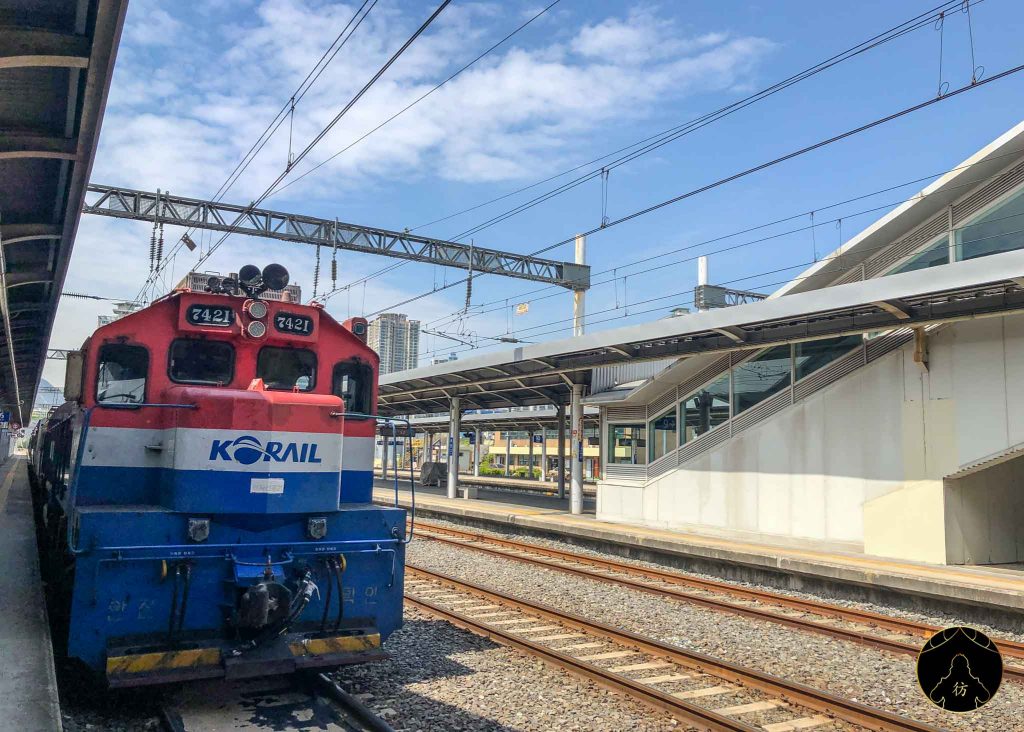
To buy your ticket, head to Bujeon Station about 20 minutes before your departure time and buy your ticket directly at the station. To check train schedules in Korea, check the Korail website.

If you want to travel faster, you can also take the KTX (high-speed train) from Busan Station to Singyeongju Station. The trip takes a little more than half an hour and costs 11000 won (~ $9) in economy class. You’ll then have to take a bus (50, 60, 61, 70, 203 or 700) to go from Singyeongju to Gyeongju (takes about 15 minutes).
If you are coming from Seoul, the fastest way to go to Gyeongju is to take the KTX to Singyeongju. The trip lasts 2 hours and costs 49,000 won ($40) in economy class. You’ll then have to take the bus as explained earlier.
If you’re coming from Seoul, obviously take the KTX but if you’re coming from Busan, I recommend you take the local train instead because it’s a direct drive to your destination and will also allow you to enjoy the beautiful landscapes between Busan and Gyeongju. 🙂
You can also buy the Korail Pass online which could save you some money if you plan on using the train often during your stay in South Korea.
Where To Stay In Gyeongju
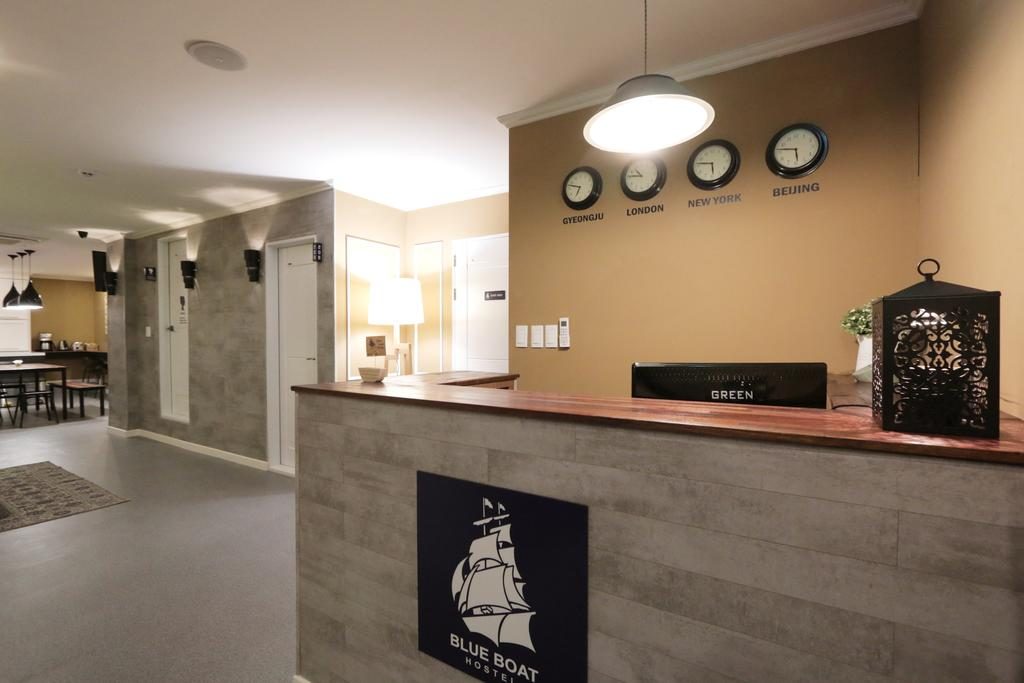
As far as accommodation goes, if you are a backpacker, I highly recommend the Blueboat Gyeongju hostel. It is conveniently located minutes away from the train station and Seongdong Market. The hostel’s dorms are also well-equipped with very comfortable beds. You will also be warmly welcomed by Sharon, the manager of the hostel who was adorable (sitting to the right in this picture).
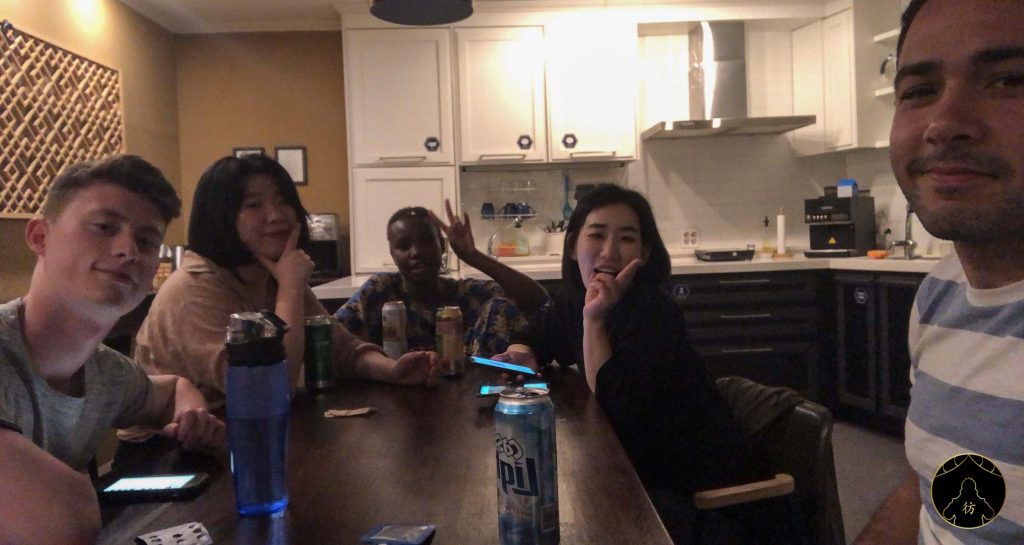
Try to book early though, it sells out pretty quickly. The Blueboat Hostels chain also has an establishment in Jeonju that I also recommend. I tell you more about it in this blog post: Jeonju Korea.
If you are looking for something more traditional, then opt for a hanok-style (Korean traditional house) hotel. There are nice hanoks in Gyeongju, the Siwoowadang is one of them.
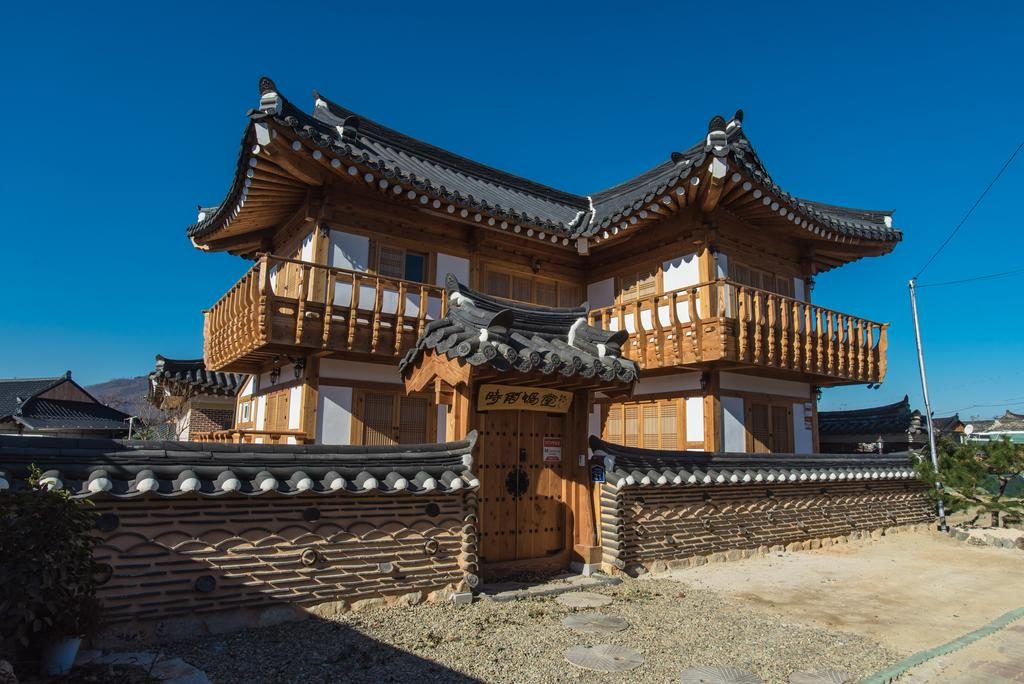
This architecture is typically Korean and you will be completely immersed in the local culture. You will be sleeping on futons (on the ground) in Siwoowadang, by the way, a bit like in Japan’s ryokan. If you’re skeptical about it, don’t be! It is actually very comfortable to sleep on a futon. 🙂
If you are looking for more traditional accommodation options in Korea, feel free to check out this blog post: Best hanok stay in Korea.
The 10 Best Things To Do In Gyeongju
Transport and accommodation aside, here’s my list of the 10 places I loved visiting in Gyeongju. To enjoy this city, keep in mind two days should be enough to visit everything. Devote a day to visit downtown attractions (1 to 7). The second day, you can leave the city center and visit places 8 to 10.
- The Seongdong Market
- The Royal Tombs of Daereungwon Park
- The Cheomseongdae Observatory
- Hanok Village
- The Woljeonggyo Bridge
- Donggung Palace
- The Ancient Temple of Hwangnyongsa
- Bulguksa Temple
- The Seokguram Caves
- Lake Bomun
I ended up staying 10 days in Gyeongju because I really loved this part of South Korea. I also met amazing people there and I’m still in touch with all my friends in Gyeongju. I hope to go back very soon. 🙂
Let’s jump right into this list!
1. The Seongdong Market
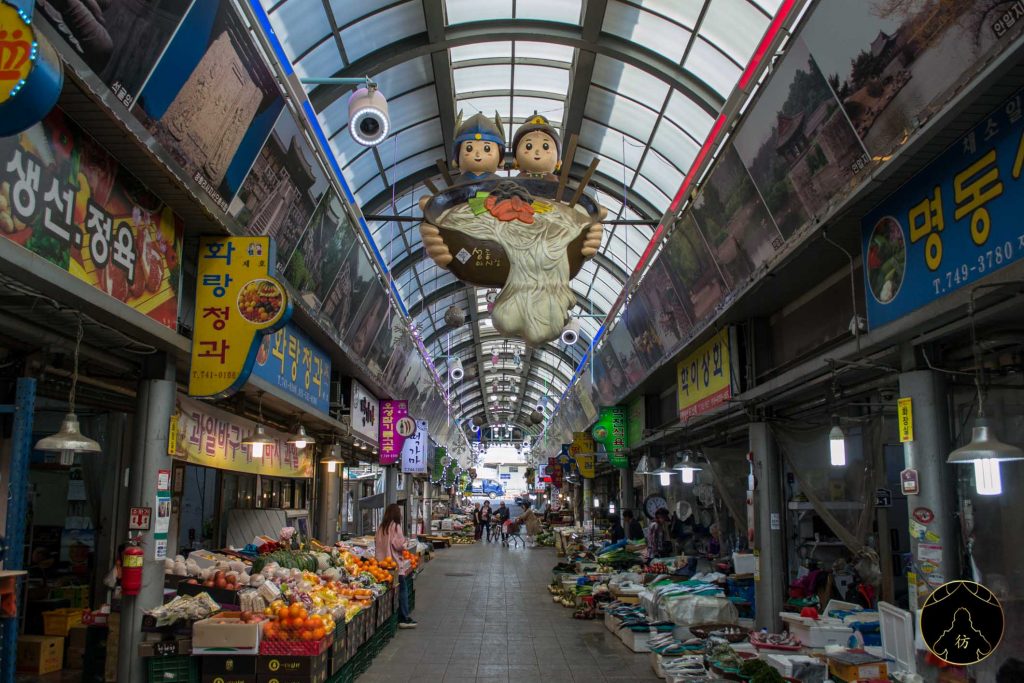
Let’s start our tour of Gyeongju City with a short stroll in Seongdong Market. It is not far from the station and it has many compartments, so to speak. There are the fruit and vegetable area, the fish and seafood market, and finally the restaurant area. Try to have lunch there at least once to get a taste of the fresh local products.
2. The Royal Tombs of Daereungwon Park
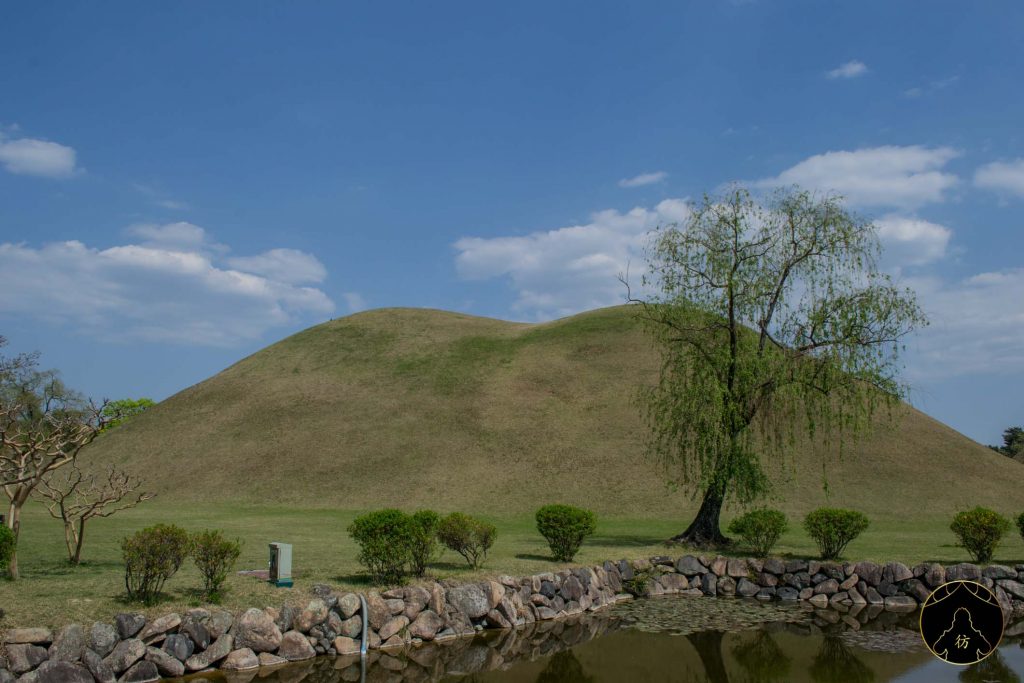
- Entrance fee: 2000 won, about $1.7
- Opening hours: 9 AM to 10 PM
As you walk in Gyeongju, you won’t miss these large dunes that have slightly weird shapes. Can you guess what they are? Actually, those are tombs called “tumuli”! When Korea was under the rule of the Kingdom of Silla (57 BC until 935 AD), the bodies of high-ranking people were placed in wooden chambers that measured about 2 meters high. Those were then covered with stones and then with soil until the dune shape is formed. In general, the higher the person’s rank, the bigger the tomb.
It is at Daereungwon Park that you will see the largest number of tombs, some of which contain the bodies of ancient kings of Silla. In addition to the historical aspect of this attraction, the park is beautiful so make sure to stop by and take a look!
3. The Cheomseongdae Observatory

- Entrance: Free
- Opening hours: 9 AM to 9 PM (to 10 PM in winter)
The Cheomseongdae Observatory is probably the most famous place in Gyeongju, but when I went there for the first time, I didn’t really understand what this 7th-century structure was all about.
When I asked about it there, I learned that it is an astronomical observatory. Not just any observatory! The very first astronomical observatory in East Asia. The name Cheomseongdae also means “the tower from which we observe the stars” in Korean.
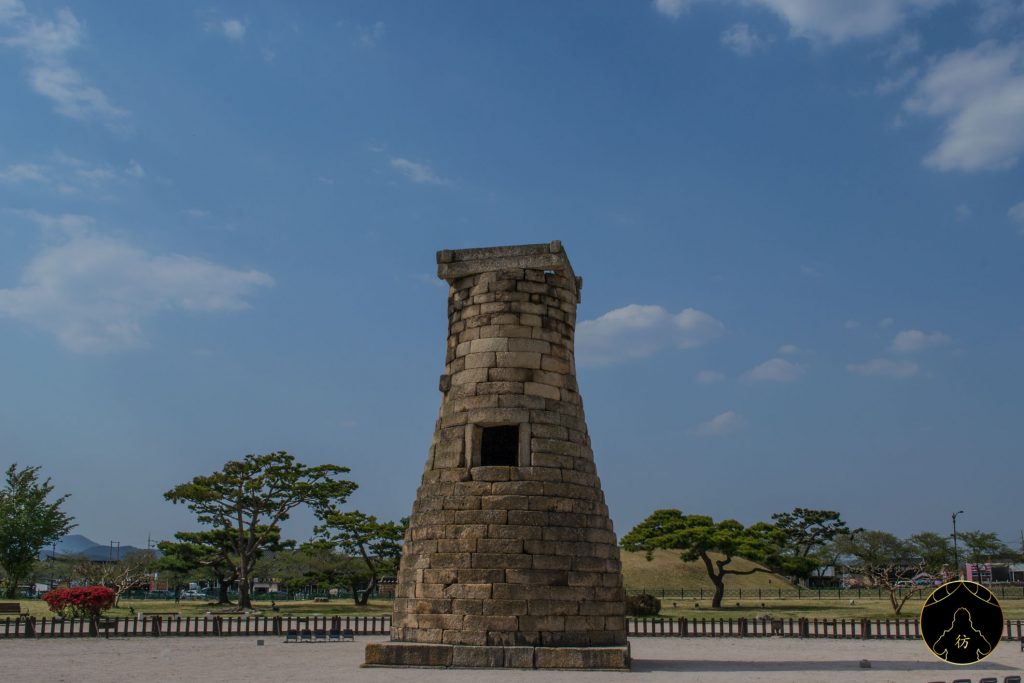
Cheomseongdae, therefore, symbolizes the technological and scientific advances of the Kingdom of Silla at that time. There are many interesting details to know about this tower. For example, it consists of exactly 362 blocks of stone in reference to the 362 days of the lunar year.
There are also 27 layers of stone in reference to Queen Seondeok who reigned at that time on the Kingdom of Silla and who is the 27th leader of the kingdom. It’s a little reminiscent of the Egyptian pyramids that have been built following carefully determined measurements.

If you travel to Gyeongju during the spring, there are beautiful flower fields in the park next to the observatory.
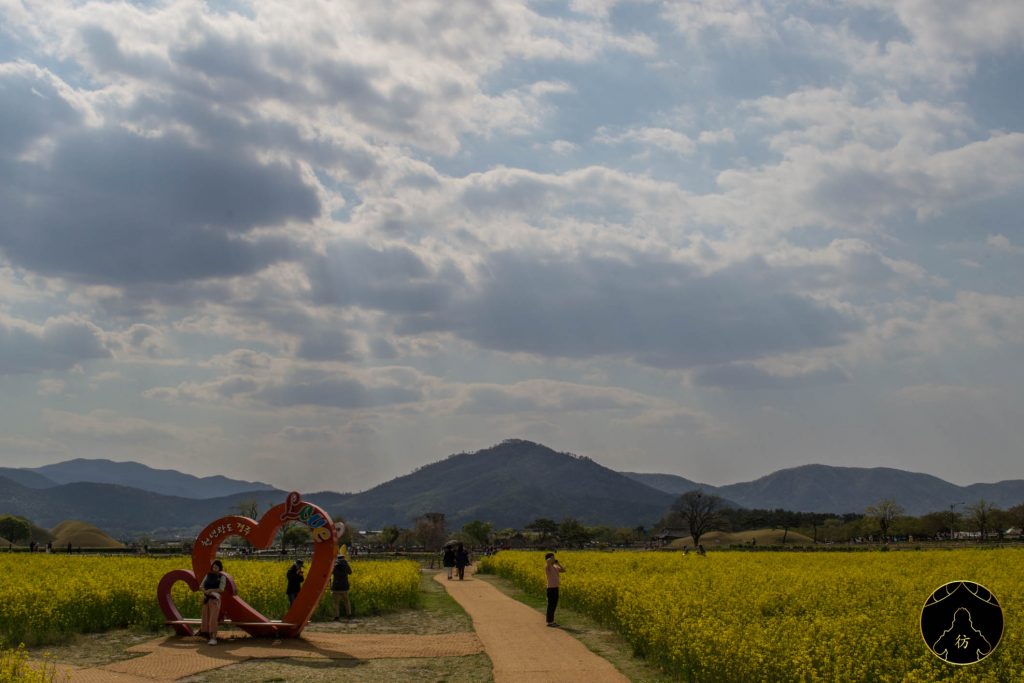
This site is also open at night so check it out again if you have time, it’s a different atmosphere for sure. It will also be an opportunity to look at the stars, like Korean scientists have, centuries ago. 🙂
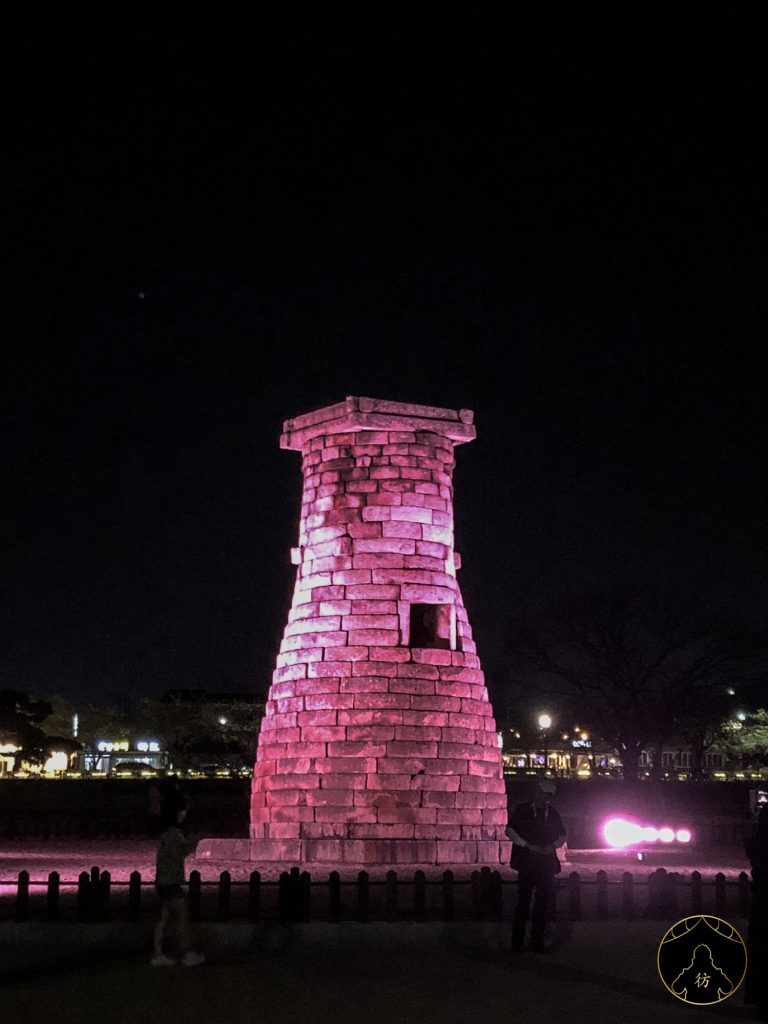
4. The Hanok Village

There’s a traditional district not far from the observatory (exact location), with ancient houses and typical Korean architecture. It’s like traveling in time! There are also nice little cafes there where you can rent a hanbok (traditional Korean dress).
5. The Woljeonggyo Bridge

A short walk away from the traditional Gyeongju district lies the beautiful Woljeonggyo Bridge that spans the Namcheon River. You can take pretty pictures of the bridge from the river if you get on the stones that were put there. Just be careful not to slip. 🙂

The Woljeonggyo Bridge is delightfully lit at night so make sure to cross it in the evening, it’s gorgeous! 🙂

6. The Donggung Palace
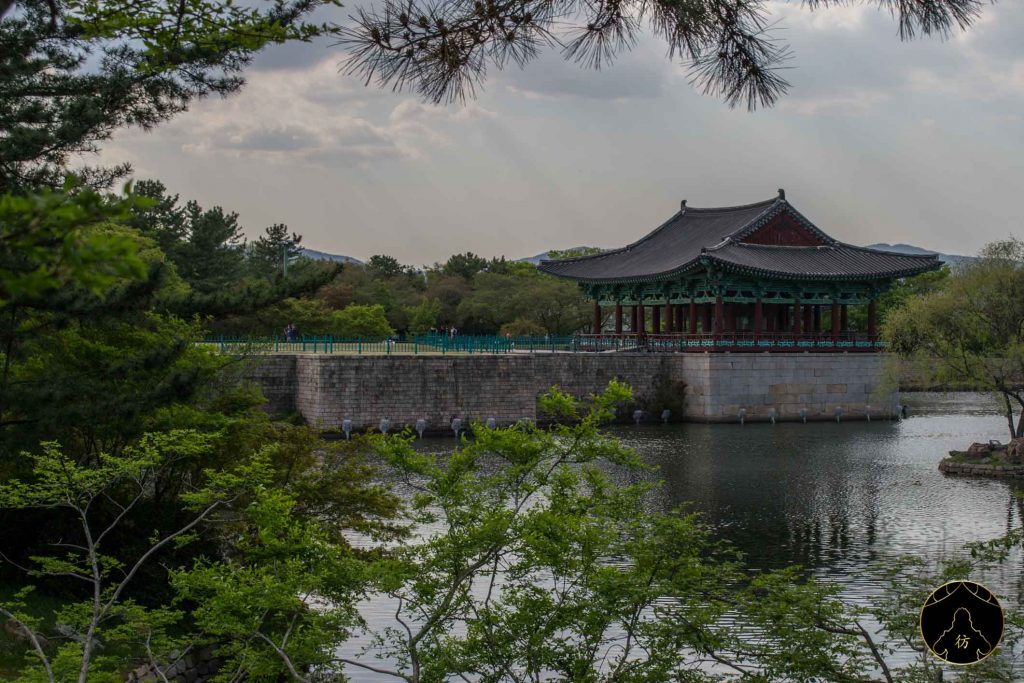
- Entrance fee: 2000 won, about $1.7
- Opening hours: 9 AM to 9 PM (to 10 PM in winter)
The Donggung Palace is also a must-see attraction in Gyeongju. It’s actually a set of wooden buildings around a nice artificial pond called Wolji Pond. It was King Munmu who ordered the construction of the Donggung Palace which ended in 674. As you can imagine, the palace was damaged over time but was recently renovated in 1974.
Like many of the attractions I mentioned above, the Donggung Palace is also accessible at night. And with the lights, this place becomes magical! That’s one of the things I really liked about Gyeongju. As night falls, the city’s atmosphere changes completely and you can revisit places that you have already visited during the day and still live a different experience.

7. The Ancient Temple of Hwangnyongsa
This is what the Hwangnyongsa Temple looks like today:
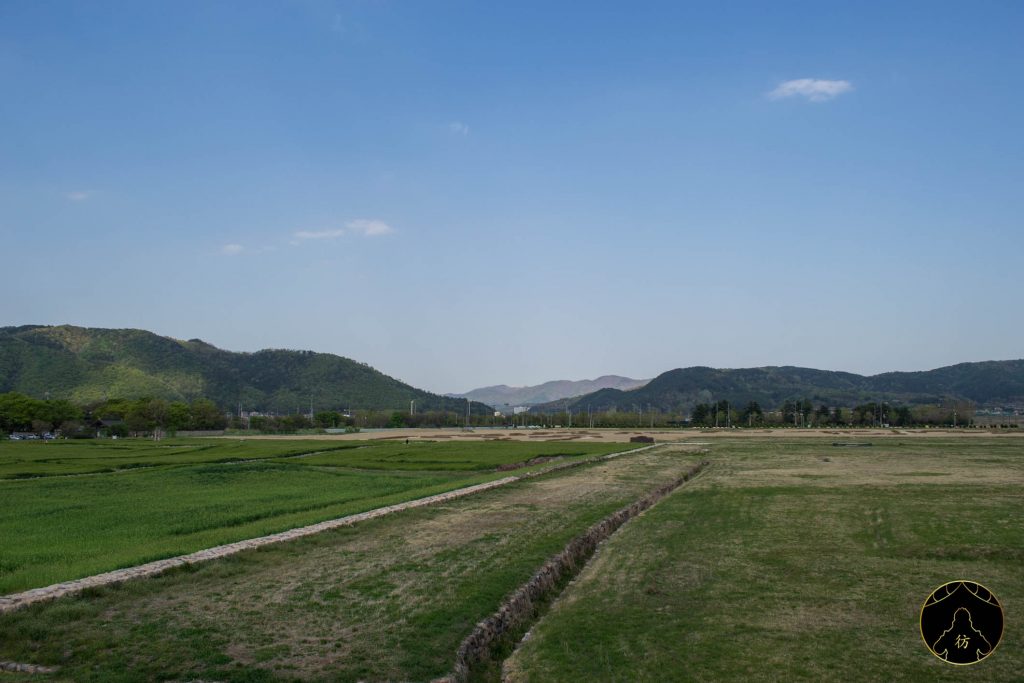
You don’t see anything, do you? Exactly! It is because the temple of Hwangnyongsa was destroyed in 1238 following the Mongol invasion.
If you’re wondering why I’m telling you about it, here’s the story.
Hwangnyongsa was a very important Buddhist temple at the time of the Kingdom of Silla, one of the most important religious centers at that time, actually. Since 1978, the government has launched archaeological excavations and new relics are found continuously on the site to this day. These relics are displayed in a sort of museum where there is also a replica of the wooden pagoda of Hwangnyongsa Temple.
FYI, the name of this temple means “the temple of the golden dragon” in Korean.

Access to the museum costs 3000 won or about $2.5. You can also watch a great 3D video of 15 minutes there. It is played every hour from 10 AM to 5 PM. You would ideally watch the video first, then visit the museum.
8. The Bulguksa Temple
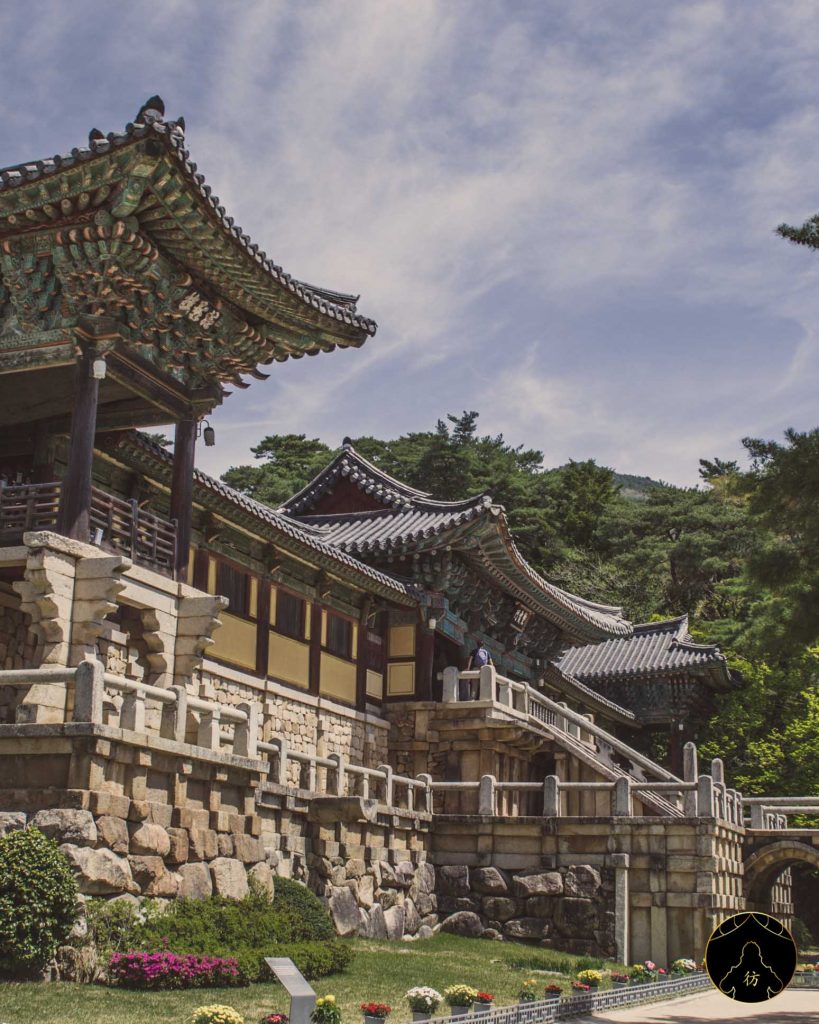
Entrance fee: 5000 won, about $4
We’re now leaving downtown Gyeongju to visit one of the most famous attractions in the area: Bulguksa Temple. To get there, you can take bus 10, 11 or 700 from downtown Gyeongju. You can also take the train to Bulguksa Station and then get on bus 11 which will take you to the temple.
If you go to the temple during the spring, enjoy the beautiful cherry blossoms right next to the bus station. It reminded me of Japan’s cherry blossoms, the famous sakura, although they are actually quite different.

Korea’s cherry blossoms are larger in size with a sharper pink color.
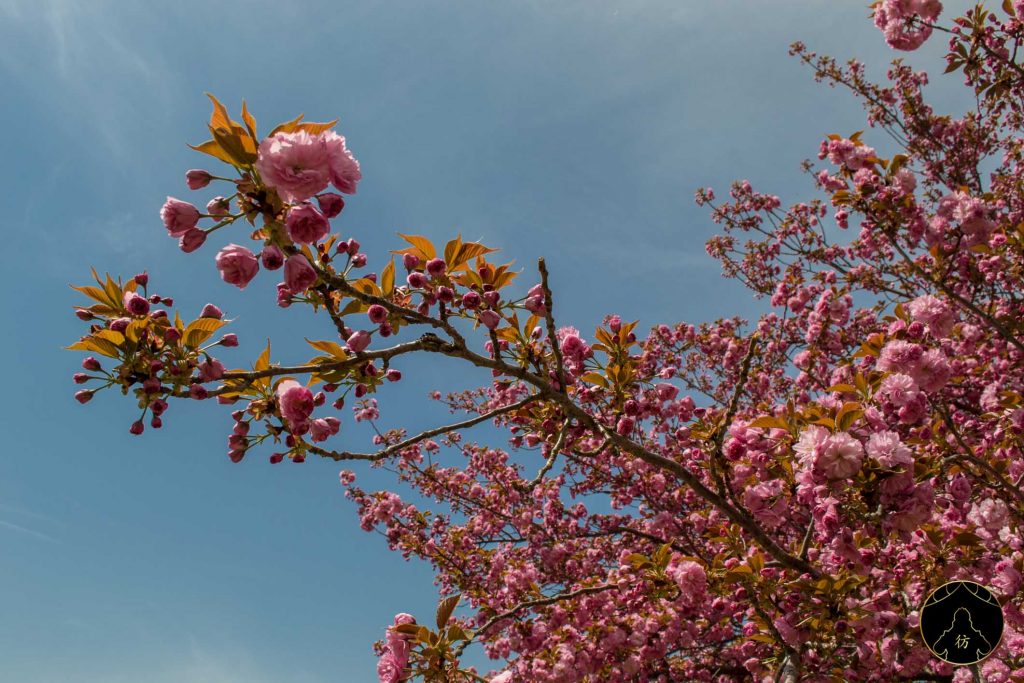
So the Bulguksa Temple was built in 528 by King Beop-Heung who was then ruling over the Kingdom of Silla. The site is absolutely beautiful and obviously listed as a UNESCO World Heritage Site since 1995. It is quite large so you’ll need at least two hours to visit all of it.
9. The Seokguram Caves
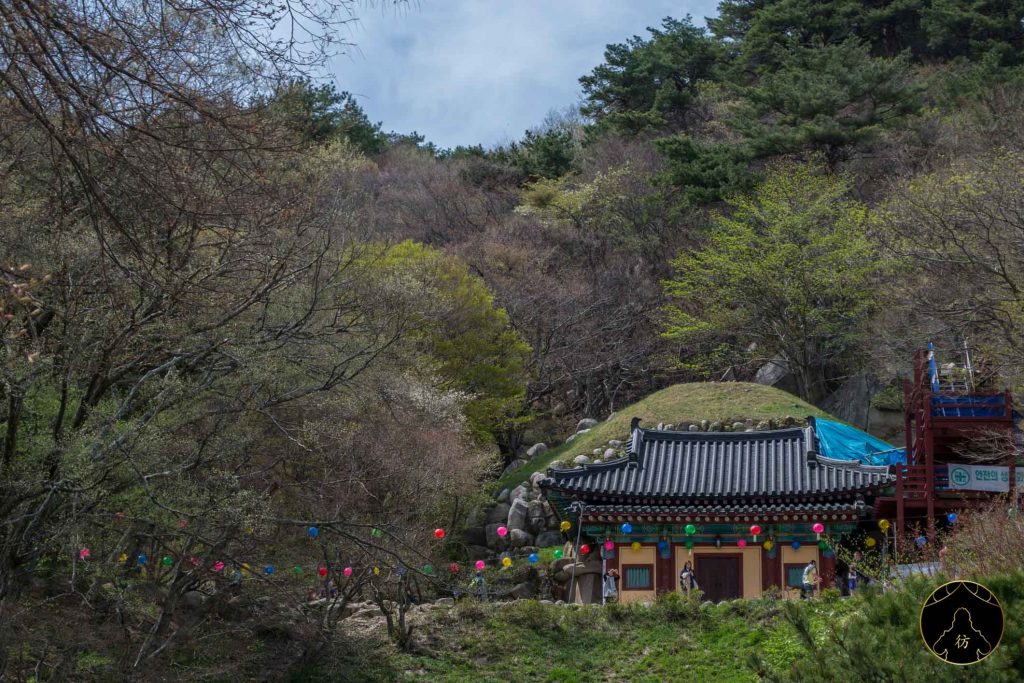
Entrance fee: 5000 won, about $4
Since you are at Bulguksa Temple, visit the Seokguram Caves too, they are not too far away. To get there, take bus 12 from Bulguksa Temple and you’ll be there in 20 minutes. This is what the station looks like and here are the departure times.
Once in Seokguram, you will find many temples and a large statue of Buddha carved on the rock and facing the sea. FYI, it is forbidden to take pictures of this statue so there won’t be any of it here. 🙂
10. Bomun Lake

Back from Bulguksa Temple, the bus will pass by Bomun Lake. So how about a walk and a breath of fresh air? 🙂 There’s a theme park called Gyeongju World by the lake. Entrance costs 23000 won or about $19.
This is it for our visit to the city of Gyeongju and its surroundings, guys! It’s a great place, don’t you think? Are you going to Gyeongju on your next trip to South Korea? Let me know in the comments below. 🙂
After Gyeongju, I went to the beautiful Andong to visit the traditional village of Hahoe. I tell you everything about it here: Andong and Hahoe in South Korea.
Want more tips and recommendations for your next trip to Asia? Make to subscribe to us on social media: Facebook Page, Facebook Group, Instagram, Youtube, and Pinterest.
See you around,
MF

